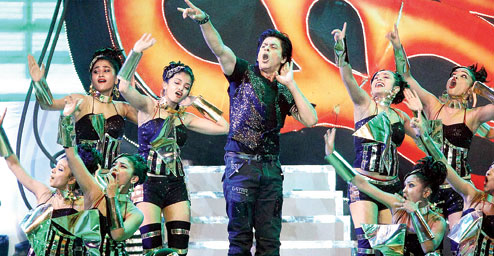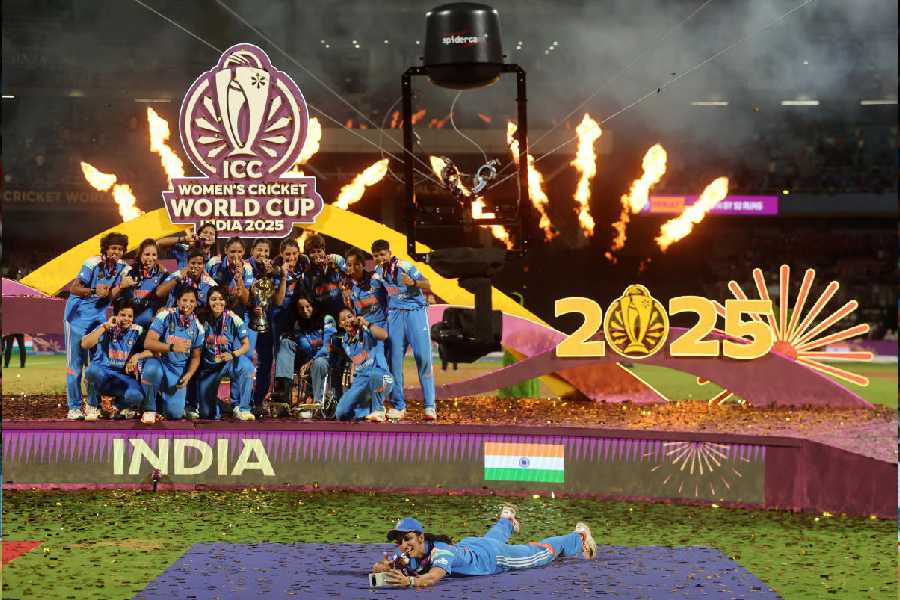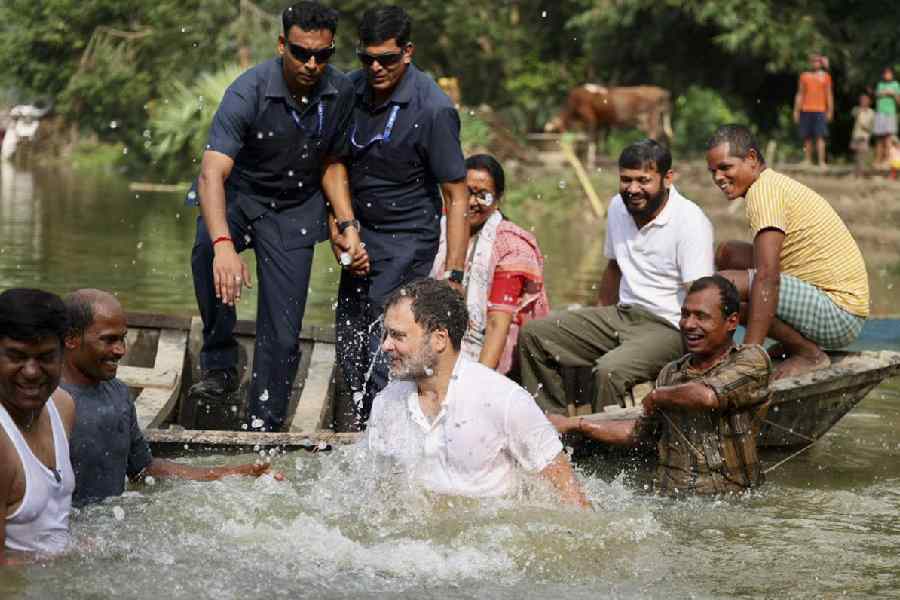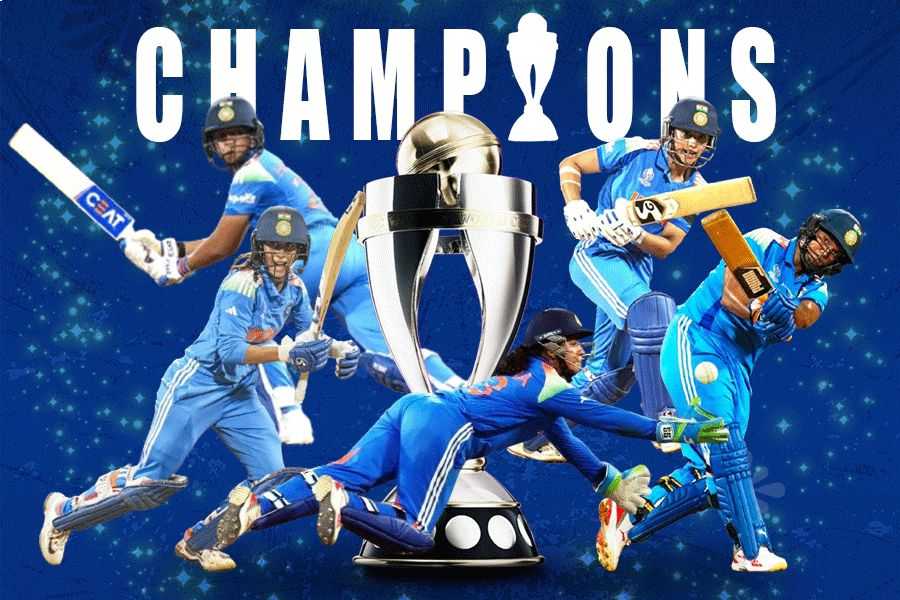 |
One-day cricket turned India into a cricketing superpower. This oft-made statement needs slight qualification. First, India became an economic force to reckon with in cricket before it became a genuinely sporting one. Second, it was the media that really did it; more specifically, satellite television, whose twenty-four hour sports channels thrived on a steady diet of limited-overs cricket — first of the fifty-over variety and lately Twenty20 — and helped create the world’s biggest market for cricket (Test cricket took a back seat — a five-Test series is now virtually unknown in India). Lastly, if the success of ESPN and the NBA is plausibly analysed as driven by Michael Jordan’s career, then Sachin Tendulkar, the Star Network and modern Indian cricket have had a similar symbiotic relationship, worthy of commemoration in the annals of media studies, and fully deserving of the gallons of ink that might be spilled on it by scholars of cricket.
Satellite television also made possible telecasts of overseas games, and not just those that featured India. Indian youngsters playing cricket in the streets and gallis so beloved of photographers and Coke commercial-makers, now suddenly found a species of game not seen before. This had many far-reaching effects: some sacred idols were carefully dismantled as Indian fans, used to lionising international players, were exposed to extensive coverage of their actions and words, thus displaying imperfections and foibles in those previously imagined perfect; it also built other ones, for it enhanced the celebrity status of cricketers and turned them into entertainers and pitchmen. Indian youngsters aped the mannerisms and modes of behaviour of their heroes and sometimes villains. They began to internalise the aspirations linked with the achievements now visible, day and night, in their living rooms. At least some of the change of the demeanour of the Indian cricketer and the Indian fan, much commented on by opponents, whether on cricket teams or in Internet-argument forums, finds its origin in their exposure to a world of cricket made available by satellite television’s plentiful offerings.
 |
| Brave New Pitch: The Evolution of Modern Cricket by Samir Chopra; Published by Harper Collins; Price Rs 299; Pages 224 |
But most importantly, the satellite and one-day international era reinforced a role long played by television in the modern age of cricket: the financial puppeteer.
Cricket has flirted with insolvency in the past; when Jagmohan Dalmiya took over as ICC president in 1997, its coffers could only cough up some $30,000, but his rapid wheeling and dealing, entrepreneurial acumen, and cricket’s television audience, the majority of which is resident in India, assures its present flirting-with-the-billions prosperity. This economic revolution, kicked off by Dalmiya and continued by Lalit Modi, ensures that the story of modern cricket is punctuated by media dollar signs as much as playing statistics. The litany of high-value deals, especially those made by the BCCI, is never-ending. The influence of the massive amounts paid for television rights ensures that a primary concern is the engineering of the spectacle to keep the money flowing in. Every single instance of Golden Goose homicide alluded to this book — the over-scheduled one-day international, the length of the IPL season, and the cultivation of benign pitches to assure five-day Tests being just three prominent examples — can be traced back to the influence of the combined baleful eye of the media rights holder and the greedy board director.
The influence of television is thus deep and fundamental on both the present and the future of the game: Test cricket is threatened by more telegenic forms; the World Cup’s membership and format depends on rights deals; Twenty20 excess is linked inexorably to its made-for-television nature. Television writes the checks; how much should cricket dance in response? The main challenge for cricket’s future is to forge an economically sound relationship with television that is sensitive to the game’s ethos and the relationships that players and fans have with it.
These constraints are not easy to satisfy, for television’s function is largely entertainment, notwithstanding the presence of the twenty-four hour news channel, situated amongst an assortment of talk shows, situation comedies, movies, and increasingly tacky “reality TV” contests. Cricket takes its place amongst this cornucopia uneasily, jostling for space and demanding attention, largely by promising to deliver the same goods. Worries about the maintenance of the gap between sports and entertainment are particularly accentuated when cricket becomes not just any old “product” but a “television product” first and foremost, to be sold to the highest bidder without regard for its further care, perhaps to be dressed up, prettified, its blemishes artfully disguised. This makeover can result in obscuring its essential features, like the struggle between bat and ball, pushed to the margins in Twenty20 cricket’s made-for-television short boundary fences. Sometimes the action on the field itself gets overshadowed; for example in telecasts which incorporate adornments such as the IPL’s “strategic timeouts” and commercials after every over.
The presence of the product commercial in cricket telecasts in India, in particular, seems to indicate that sponsor and advertiser priorities have completely trumped those of the game’s community. NEO, Zee, Ten Cricket and indeed, whoever else happens to be broadcasting cricket in India, have desecrated the sport not just by the number of commercials shown but by allowing the commercial to intrude on the game itself. Cricket viewers were first forced to adjust to an abrupt break at the end of an over, the prime advertising space for commercials, and then, to one at the fall of a wicket, thus depriving the viewer of crowd and player reactions and instant, high-quality replays from several angles. The leisurely return to the game after commercials means missing out on the first ball of the over to follow.
 |
| TELLY CALL: Brad Haddin of Kolkata Knight Riders during a practice session and (top) Shah Rukh Khan performs at the IPL opening ceremony |
Not content, television stations have moved into the over itself; the smallest lull in play is now aggressively utilised for a commercial. This is being taken to its logical conclusion: the commercial has moved from the billboard on the boundary to the painted signs on the field and the ghastly imposed banners on slips, visible during a bowler’s run-up. Meanwhile the game is literally forced to occupy a smaller space, reconciling itself to a shrinking television screen whose borders may display print advertisements between deliveries. Thankfully, Ten Cricket, one of the worst offenders in this regard, was served a show-cause notice by the Indian ministry of broadcasting and information for violating its advertisement codes during its coverage of India’s 2010-2011 tour of South Africa. Perhaps similar reckonings with justice await other offenders.
These butcheries of the televised “product” are all blots on the game. Any self-respecting manager of such a lucrative “property” would not tolerate such slipshod treatment. But the BCCI shows no inclination to impose a set of quality controls on those broadcasters into whose care it has thrust the game. Its utter lack of respect for the game, its cynicism in its willingness to disregard the concerns of the fan, stands exposed by this indifference.
In general, cricket’s relationship with television is marked by excessive deference to its demands. This is in sharp contrast with other professional, commercialised sports, which are just as dependent on sponsors and television rights. For a sport that prides itself on its traditions and history, this difference is unflattering. As Mukul Kesavan points out, television channels have long wanted to “divide football into four quarters instead of two halves to make more time for commercials. But football’s administrators have consistently refused on the ground that this would change the nature of the contest”. But in cricket, it seems that every scheduling decision, every rule change, every tweak to playing conditions, is done with the television rights deal in mind. The demands of the long-term future of the game, perhaps taken care of by less crowded cricket calendars, perhaps by ensuring cricketing balance on the field, perhaps by removing distinctions between members of the ICC, speak to a wisdom that needs to dawn, and soon, on cricket’s administrators. They would do well to remember that television rights deals will get better if the game can show a devoted following, which cricket appears to be in danger of losing if it cannot retain its self-respect.
Complaints about televised coverage are especially poignant for the modern cricketing fan to make because modern television makes available access to the game hitherto undreamed of, in a manner that sparks genuine aesthetic pleasure. Where the “ancients” delighted in the photograph, the “moderns” can draw on the high-definition television spectacle, exposing, clarifying, highlighting and making possible catharsis and yes, entertainment. As a result, the relationship between the fan and the player has the potential to be a much richer one, exposing the fan to a greater appreciation of players’ skills, while making evident their many limitations. Cricket fans are currently confronted with an embarrassment of visual riches, not via the gimmickry of the spider-cam but by the appropriate utilisation of technology to bring about a mature realisation of what is truly beautiful about the game.
Samir Chopra is a professor of philosophy at Brooklyn College of the City University of New York










